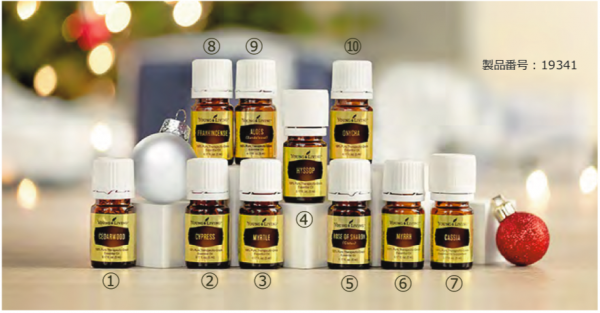聖書の中の10のオイル【シダーウッド】
聖書の中の10のオイル【シダーウッド】
ゲリーさんのブログをご紹介します。

『聖書の中の10のオイル』セットは2019年12月25日まで日本で購入可能です。
ヒマラヤスギは、豊かで古代の歴史を持つ別の芳香族です。
聖書で言及されている杉材は、レバノンの杉であり、最も古くから知られている芳香族の一つです。
これらのオリジナルの杉の木のほんの数個だけが今日生き残り、レバノンとキプロスの保護された種です。アトラス杉であるCedrus atlantica種は、おそらくこの杉の最も近い既知の近縁種であり、セスキテルペンとして知られる芳香族化合物が非常に豊富です。
ヒマラヤスギは古代に腐敗しないことで知られていました。
これはおそらく、レバノンのヒマラヤスギが、キリストが教えたソロモンの神殿とヘロデの神殿の建設に使用された理由の1つです。
ヒマラヤスギは、2つの聖書の浄化の儀式に不可欠な部分でした。
1つはハンセン病患者用で、もう1つは死体に触れることで不純な人々のためです。
衣類には杉を塗って湿気から保護しました。 「油性」という言葉を見ると、乾燥した物質を塗らないので、油または抽出物の形でなければならないことがわかります。樹皮や小枝に油を塗るのではなく、液体、通常は油を塗る。
ヒマラヤスギは、腐敗を保存および防止する能力において非常に強力です。
古代エジプトの記録と著作から、ミダー化の過程で杉が使われたことがわかります。ミイラに使用される3つの主要成分の1つとして、ミルラとサンダルウッドを組み合わせたのはスギ油であった可能性があります。
聖書の時代に古代の人々によって選ばれたオイルの多くが、高レベルのセスキテルペン活性を含むオイルであったことに注意することは非常に興味深いです。
ヒマラヤスギのセスキテルペンは95%以上です。セスキテルペンは、感情と記憶の中心である扁桃体を含む脳の辺縁部にユニークな刺激効果を持つ化合物です。
シダーウッドは伝統的にリンパ系のサポート、動脈の再生、さまざまな病気の治療に使用されてきました。しかし、これらの効果を実証した最近の研究はまだありません。
古代聖書の十二の油についてもっと学ぶことを楽しんでいただけたでしょうか。次回、カシアの歴史について議論する前回の記事にご参加ください。
基本的にあなたのもの、
ゲリー・ヤング
(2010年2月9日公開)
Cedarwood is another aromatic with a rich, ancient history. The cedarwood referred to in the Bible is the cedar of Lebanon, one of the oldest known aromatics. Only a few of these original cedar trees survive today and are a protected species in Lebanon and Cyprus. The species, Cedrus atlantica, the atlas cedar, is probably the closest known relative of this cedar and is exceptionally rich in aromatic compounds known as sesquiterpenes.
Cedar was known for its incorruptibility in ancient times, which is one reason perhaps that the cedars of Lebanon were used to build Solomon’s temple and Herod’s temple where Christ taught.
Cedar was an integral part of two biblical purification rituals: one for the lepers and another for those who were impure from touching a dead body. Clothing was also anointed with cedar to protect it from humidity. If we look at the word “anoint,” we recognize that it has to be a form of oil or extract because you don’t anoint with dry material. You don’t anoint with bark or twigs, you anoint with liquid, usually with oil.
Cedar is very powerful in its ability to preserve and prevent decay. We see from the records and writings of ancient Egypt that cedar was used in the mummification process. It may have been cedar oil that was combined with myrrh and sandalwood as one of the three primary components used in mummification.
It is very intriguing to note that many of the oils selected by the ancient people in biblical times were oils that contain high levels of sesquiterpene activity. Cedar is over 95 percent sesquiterpenes. Sesquiterpenes are compounds that have a unique stimulating effect on the limbic region of the brain, including the amygdala, the center of emotions and memory.
Cedarwood has been traditionally used for supporting the lymphatic system, regenerating arteries, and treating various maladies. However, no recent studies have yet substantiated these effects.
I hope you have enjoyed learning more about the Twelve Oils of Ancient Scripture. Join me next time for the last installment where I will discuss the history of cassia.
Essentially Yours,
Gary Young
(Published February 9, 2010)
